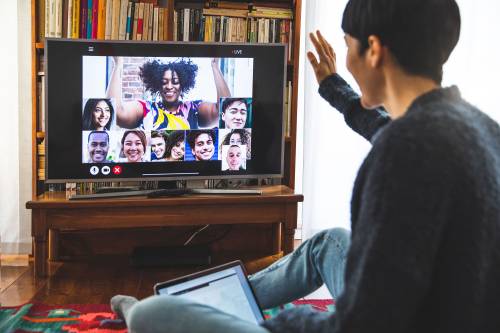
Using livestreaming to reach your congregation and community
COVID-19 has made it necessary for all of us to up our technical game. While some churches have returned to their buildings, others have not. So, for those churches that, out of an abundance of caution, have not returned to their building and are still looking for a way to connect with their congregations, livestreaming is certainly an option. And, it’s not as difficult or as costly as you may think.
The first requirement for livestreaming is a video camera. There are many different livestreaming cameras on the market today. Like any type of technical gear, there is a wide range of costs and equipment capability.
However, before you start livestreaming, there are some questions you should ask, such as:
How do I create a livestream?
What equipment is needed to livestream a church service?
What platform will I use for livestreaming?
- Facebook Live
- YouTube
- My church’s website
How do I start streaming?
Livestreaming can offer your church lots of viewers, hours of engagement and outreach to people who may not be members of your congregation. Livestreaming can be a relatively inexpensive investment for your church that offers a great return.
Concerned about the cost? Well, your initial expenses will be for your streaming equipment. You can spend as much or as little as your budget allows for this equipment. Make sure you have a plan in place for what you want to accomplish with your livestreaming and what you will need to make it happen. Do your research! Let’s start with the typical components of basic equipment.
Basic streaming equipment
To begin, you need a device to stream from. A PC or Mac is the most popular choice; however, you may use a smartphone. The equipment you use will have an impact on the type and quality of content you produce. You will also need a stable and fast internet connection to transmit your live videos to streaming platforms.
Additional needed streaming equipment includes:
Video source
A quality video source makes for a better product. Consider one of these apparatus for livestreaming:
- Webcams: A webcam offers a simple and affordable option for video setup for streaming. Webcams directly connect to your computer, have built-in microphones, and are perfect for live chats and streaming.
- Camcorders: If your budget allows you to fully commit to livestreaming, a camcorder is simply the best option. These cameras are built for professional video recording. Camcorders offer a 4K resolution, produce crystal-clear HDMI outputs and guarantee the smoothest video you’ll ever be able to produce.
- Smartphone or tablet: With a smartphone in your pocket, you’ll always have a video-ready device close at hand. However, capturing great video for a livestream isn’t always as simple as pointing and shooting. Framing and stabilizing are essential. Nothing says “unprofessional” like footage that is bouncing up and down. Placing your phone or tablet onto a stand or tripod is a great solution for this.
Audio source
Your audio source is primarily microphones. Like anything else, microphones come in all levels of quality. There are three levels of microphones based on their connection type and sound quality.
Consider one of these items for your audio source:
- XLR microphone: This microphone provides the highest sound quality and it’s durable. However, it requires an audio mixer.
- Built-in microphone: While this is the most accessible type of microphone, it also provides the lowest sound quality.
- USB microphones: This is the most popular choice for livestreaming. This type of microphone connects directly to your computer and produces a relatively great sound. A USB microphone is also moderately cheap and doesn’t require you to have any additional devices.
Accessories
Regardless of your streaming budget, you will still need some additional streaming equipment. This equipment includes:
- A tripod: to hold your video camera.
- An arm: to hold your microphone.
- Cables: to connect audio and video sources.
- Light stands and LED rings: to further improve your video quality.